National Symbols of Latvia.
The Flag
The official state symbols are the flag, the coat of arms and the national anthem. In addition, the oak tree, amber and the white wagtail are just some of the many natural symbols that appear in Latvian designs and decorations.
The maroon-white-maroon flag of Latvia is one of the oldest in the world and dates back to a battle against Estonian tribes near the Latvian town of Cēsis in the 13th century.
According to one legend, it originated from a white sheet used to carry a mortally wounded Latvian tribal chief from the battlefield. Soaked with his blood on two sides, his soldiers hoisted the warrior’s sheet as a banner as it led them to victory.
In the 1860’s Latvian student Jēkabs Lautenbahs-Jūsmiņš discovered a written reference to this flag in a collection of 13th century rhyming verse chronicles popular among the knights of the Livonian Order. These ‘songs’ glorified the feats of the Germanic Crusaders that sought to Christianize the pagan Latvian tribes.
A half century later, in May 1917, artist Ansis Cīrulis used this historical description to design the flag as we know it today. On June 15, 1921 this design was adopted as the Latvian national flag by parliamentary decree.
The flag’s colour proportions are 2:1:2 (the upper and lower maroon bands are twice as wide as the white band in the middle), and the correlation of the width and length of the flag is fixed as 1:2. The distinctive maroon colour of the Latvian flag is officially known as “Latvian red” in the rest of the world.

Colour proportions of the white colour of the flag: Pantone "White".
Colour proportions of the red colour of the flag: Pantone "1807C";Pantone "Latvian red"
Coat of Arms
Latvia’s national coat of arms was established as a symbol of independent statehood after the proclamation of an independent Latvian Republic in 1918.
The coat of arms combines traditional heraldic symbols of Latvian national identity with those of historical territorial districts.
The sun is a central symbol in Latvian culture, particularly in songs, poetry and art, and here symbolizes Latvian national statehood.
Even before achieving independence, a stylized sun was used as a national symbol on uniforms worn by the Latvian Rilfemen who served in the Czarist Russian army during World War I. The 17 rays of the rising sun represented the 17 Latvian-inhabited districts of the Czarist Empire.
The three stars above the coat of arms represent the three historical districts (Vidzeme, Latgale and Kurzeme-Zemgale) which formed a united Latvia. These culturally important regions are also symbolized by historic heraldic figures that date back to the early 17th century. The western Latvian regions of Kurzeme and Zemgale are represented by a red lion, a symbol used by the Duke of Kurzeme (Courland) as early as 1569. Latvia’s eastern regions of Vidzeme and Latgale are represented by a silver griffin. This mythological winged creature with an eagle’s head first appeared in 1566 when this part of Latvia came under Polish-Lithuanian control.
The Latvian national coat of arms was designed by Latvian artist Rihards Zariņš. The proper display of the three versions of the coat of arms - large, small enhanced and small - is regulated by Latvian law.
National Anthem
The National Anthem“Dievs, svētī Latviju!” (“God bless Latvia!”) was officially proclaimed Latvia’s national anthem in 1920, but it also played an important role in leading to Latvia’s independence in 1918.
It was written by Kārlis Baumanis in the second half of the 19th century, at a time when the
Latvian people were beginning to openly display strong national sentiments. In fact, it was the first song to use the word ‘Latvia’ in a lyric.
The song was first performed in 1873 at the First Latvian Song Celebration in Rīga. At the time, Latvians were well known as an ethnic group in the Czarist Russian Empire, but a country called Latvia did not exist. Nationally-minded writers and activists had begun developing the idea of ‘Latvia’ as a designation for the territories that had traditionally been inhabited by Latvians.
To use the word ‘Latvia’ in a song was a bold challenge to the Czarist regime and was initially forbidden by Moscow. As a result, the word ‘Baltics’ replaced ‘Latvia’ in this first performance of the song. It was first sung as a national anthem on November 18, 1918 at the proclamation of Latvia’s independence.
The Latvian anthem differs from many national anthems in that it does not mention war, national struggle or victory, but rather describes a land where young girls blossom, young men sing, and where both aspire to dance together in joy.
 Text of the anthem of the Republic of Latvia.
Text of the anthem of the Republic of Latvia.
God, bless Latvia,
Our dearest fatherland,
Do bless Latvia,
Oh, do bless it!
Where Latvian daughters bloom,
Where Latvian sons sing,
Let us dance in happiness there,
In our Latvia!
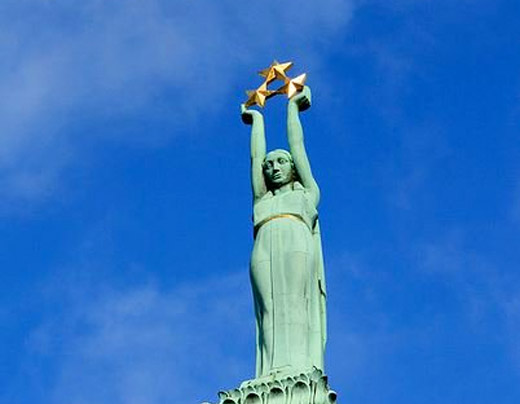
National Landmark
Brīvības piemineklis - the ‘Freedom Monument - is is the most important landmark, the symbol of Latvian independence and statehood.
Designed by Kārlis Zāle and funded through public donations in 1935, the monument survived a fifty year occupation to emerge as a rallying point for mass pro-independence demonstrations in the late 1980’s.
The inscription „Tēvzemei un brīvībai” means ‘For Fatherland and Freedom”. The sculptural reliefs at its base depict important moments in Latvia’s history, while the woman at the top symbolizes Latvia’s freedom and sovereignty. She holds aloft three stars indicative of the three historical districts of Latvia.
Learn more with:
www.wikipedia.org
Latvia – the Singing Nation.
The culture in Latvia has a strong influence by Latvian folklore and by the people of the country and how attached they are to their homeland. Latvians have the rich heritage of traditional folklore, especially folk songs. It is unusual to find a Latvian who has not sung in a choir or some other group at some point in his life.
Latvia is renowned worldwide for its choral singing traditions. When the country regained its independence, the events that took place were denoted “the Singing Revolution”. Latvia’s cultural heritage and self-awareness has been defined and documented for many centuries by its folksongs, which have been collected in numbers of several million. Latvian folksongs have expressed the peoples’ life cycles, their relationships with nature, feasts and rituals, and elements of everyday life.
The Latvian Nationwide Song and Dance Celebration is a grass-roots movement that literally pervades all of Latvian society, engaging huge numbers of people from all walks of life, from the largest cities to the smallest rural villages. Its uniqueness is recognized to be a national treasure by UNESCO. The Latvian Nationwide Song and Dance Celebration is an event that is held once every five years, but at the same time, it is a process that is continuous. The last festival took place in July 2013, and it brought more than 40 000 singers, instrumental musicians, and dancers to the capital city, and audiences, both live and via radio and television, spanned the entire nation.
Folk songs are one of Latvia's national treasures. The Latvian folk song – daina – is one of the distinguishing features of Latvian culture. There are three essential elements of these folk songs: tradition, literature and symbolism. The Daina is a form of oral art and is a symbol that has both shaped and epitomized Latvia’s national identity for the last two centuries. There are more than 1.2 million Dainas, with references to them in all forms and layers of culture, from theatre plays to everyday conversations.
The collection of Dainas under the name “The Cabinet of Folksongs” is inscribed in the UNESCO Memory of the World Program.
Learn more with:
www.latvia.eu ~
www.latvia.eu ~
www.dziesmusvetki.tv
Literature, Art and Theatre.
Latvian traditions still play a central role in the Latvian identity today. This unique Latvian culture is woven through its literature, music, theatre and the visual arts. Yet, the legacy of foreign rule has also given Latvia a second, European culture. As a distinctive Latvian identity emerged during the National Awakening in the 19th century, so did an appreciation for the achievements of other cultures. Latvians embraced all the classical arts – literature, painting, theatre, symphonic music, architecture, opera, ballet and film.
The largest figure in Latvian literature is Janis Rainis. Where Germans have Goethe, where the Spanish have Cervantes, Latvians have Rainis who Latvians say would be compared to the greatest authors of the world had he not written in a lesser known language. At the turn of the century the Latvian poet Rainis, and painters Janis Rozentāls and Vilhelms Purvītis had established international reputations. In the 1920’s and 1930’s Latvia’s ‘Rīga group’ of painters became known internationally.
Latvians love theatre. They go to the theatre, they discuss it, actors are admired and theatre directors become opinion makers. With Alvis Hermanis alone, one of the leading theatre directors in Europe right now, Latvia’s name would have gone down in the history of theatre, but there is certainly much more on offer.
Learn more with: www.latvia.eu
Link 1 ~
Link 2 ~
Link 3 ~
Link 4 ~
Link 5 ~
Link 6
Museums.
All over Latvia you can visit various museums that will help you understand better the culture of Latvia. These museums are small and cozy but typically showcase art and history in a modern, accessible manner. Visit Riga on the Night of the Museums in May to see many museums for free. Museums you can visit include the Museum of Decorative Arts, the Bourse Foreign Arts Museum, the Porcelain Museum, the Museum of the Occupation and many more.
In the museums and art galleries of Latvia you will find both contemporary art and timeless values. Experience excellence at the Daugavpils Mark Rothko Art Centre, where you will find the original works of the world-renowned painter Mark Rothko, the father of abstract expressionism. At the Riga Bourse art museum you can delight in the splendour of the building’s architecture and the exhibitions of outstanding artists.
If you are more interested in the stories of the previous generations, look for the remnants of history in the Corner House – the former headquarters of the Soviet KGB, where you can take a guided tour through the prison cells, passageways, and the basement.
In the Ethnographic Open-Air Museum you can explore the historical dwelling houses of farmers, craftsmen, and fishermen, and experience the celebrations of annual Latvian festivals.
Learn more with:
www.latvia.travel
www.latvia.travel
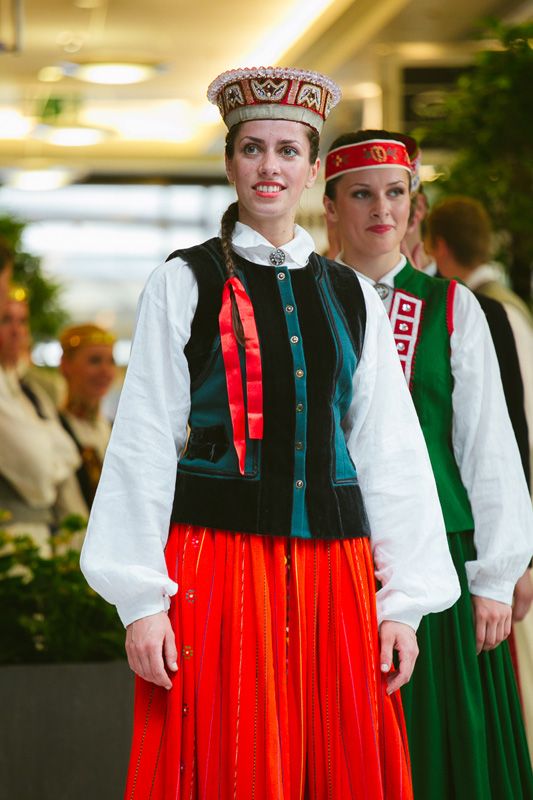
Folk dress.
Folk dress in Latvia has played and still plays an important symbolic role in the preservation of national values and cultural heritage and in the creation of a feeling of unity of the people. This occurred in the 1920s and 1930s, when the independent Latvian nation was founded for the first time and interest in folk dress was born; during the years of Soviet occupation; and after the renewal of Latvian independence in 1991. Today folk dress has a different application than in earlier centuries and now it is worn only on festive occasions or during performances. Nevertheless the great amount of interest that Latvians express in folk dress has helped to preserve, research and popularise it.
There are two popular historic periods of specific traditions that characterise Latvian dress: costume of the 7th-13th century that is often referred to as “ancient dress” and clothing worn in the 19th century and referred to as “ethnic” or “ethnographic dress”.
The Late Iron Age (9th - 13th century) saw five main tribal realms established in Latvia. The Baltic peoples comprised Sēļi (Selonians), Zemgaļi (Semigallians), Latgaļi (Latgallians), and Kurši (Couronians). In addition the Finno-Ugric Lībieši (Livs) were divided into Livs inhabiting the shores of the country’s principle rivers, the Daugava and the Gauja; and Livs in north-west Latvia, who differed in dress from the other two Livonian peoples. Latvia’s five modern regions take their names from the dominant tribal group to form Sēlija, later Augšzeme, in the south-east, Zemgale in the mid-south, and Latgale in the east. Kurzeme in the west and Vidzeme [Middle Land] in the central and northern parts are the two regions where the local Baltic people assimilated the Liv people and their traditions. A certain cultural exchange always existed among the regions.

Eating traditions.
Latvia is a real paradise for gourmands – here you can enjoy a traditional meal as well as modern cuisine. Latvian food is popular in Latvia and, also, as Latvia is on the crossroads between East and West, and North and South, you can observe the influence of many different national cuisines and enjoy the result – borrowing the best from each. Meat, fish, potatoes and dairy products are the most popular components of main dish meals. Salads are more often composed of vegetables than of greens, and sour cream or mayonnaise is the preferred dressing.
Many people in Latvia grow their own food, thus, it can be said that ecological food is widely available. Every person living in the countryside grows food for himself and city dwellers can purchase the farm-grown food in so-called green markets. brown rye bread.
100% sourdough rye bread is the traditional staple of Latvia, and it is central to Latvian culinary and cultural history.
Grey Peas with Bacon perhaps is the most traditional Latvian hot dish. It can be served as a snack with beer, or as a main course.
Beetroot Soup - a burgundy colour soup smells really nice when steaming in a bowl.
Especially in the cold time of the year, this soup is like an elixir of renewal. The soup usually is served with sour cream and a few pieces of black or white Traditional Beetroot without mushroom. However, today it’s often flavoured with these ingredients.
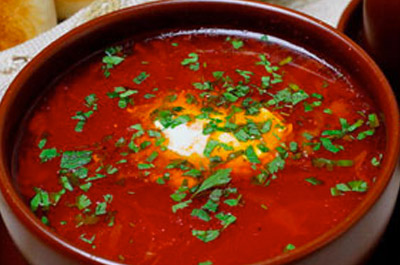
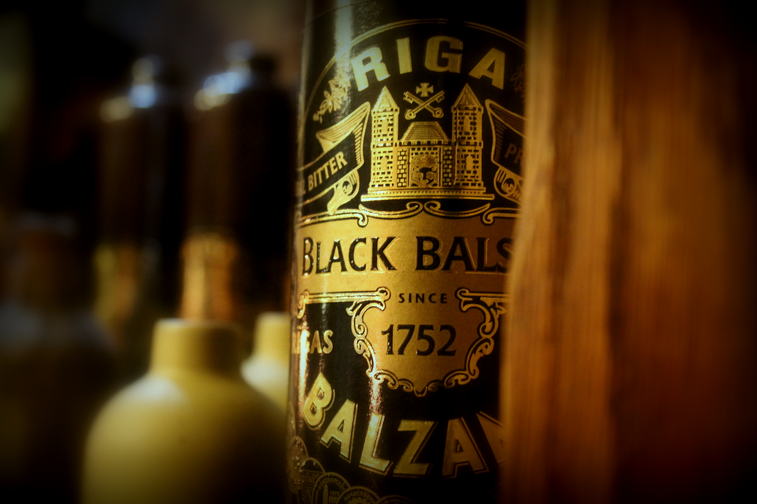
Bread Soup
is one of the famous desserts in Latvian traditional kitchen. The soup is bread. Latvian Soup is meat or made of brown tasty bread, flavoured with raisins and other dried fruits.
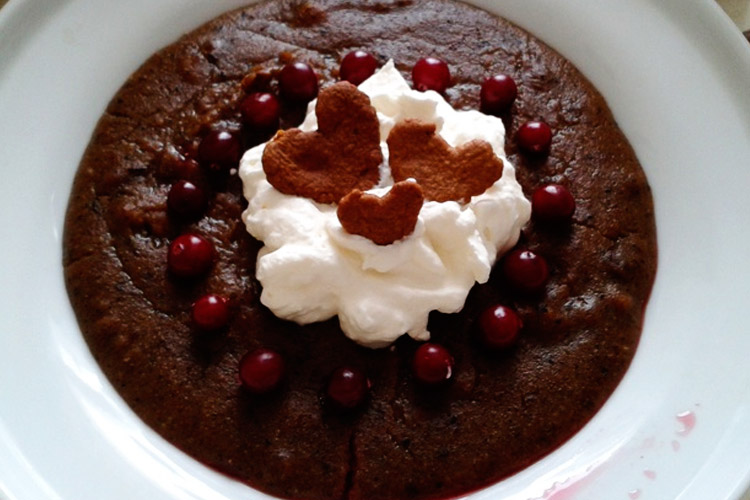
Janis Cheese
is the best-known cheese in Latvia. It’s the tradition to have Janis Cheese during Midsummer festival, but you are always welcome to have some or to make some any time you want. Slightly bitter scent reminding of summer even in mid-winter, golden brown colour and unmistakeable taste -
Riga Black Balsam is Latvia's most characteristic alcoholic drink. This strong and sweetish drink opens up a wonderful world of sensuality. Black Balsam consists of 24 ingredients though its recipe is still kept secret. According to legend, Empress Catherine the Great of Russia was cured after drinking Riga Black Balsam. In 2010, Riga Black Balsam was declared the best brand in Latvia. Try the drink to better understand Latvia!
Hemp-seed butter usually is made of sweet-cream butter and hemp seeds that are crushed and added to the butter. The colour of hemp seeds makes the butter creamy green and adds a special bitter-fresh and slightly hazy flavour.
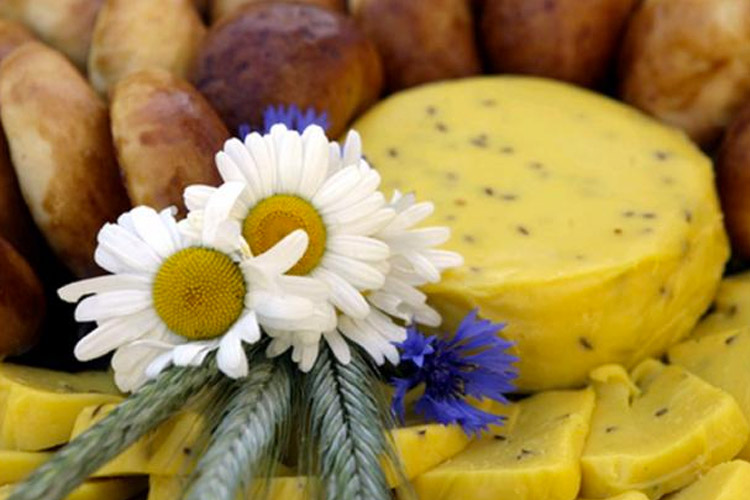
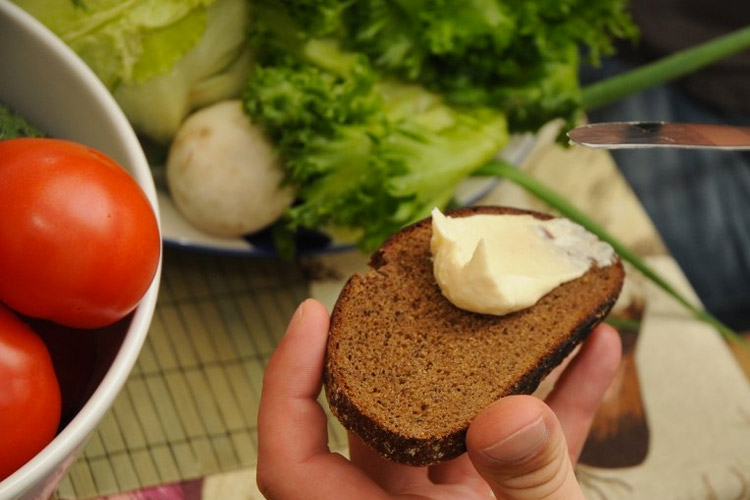
Pearl barley and potato porridge
served with sauce of fried pork and onions. Pearl barley and sliced potatoes are boiled in water, milk is added when they are ready, giving the porridge mild taste.
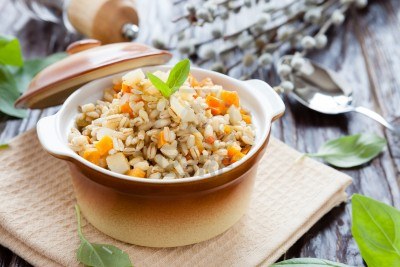
Debesmanna
a cranberry mousse made from cranberry juice, farina (cream of wheat), and sugar. From so few ingredients comes a delightfully airy dessert that is so easy to whip up and is satisfyingly tangy.
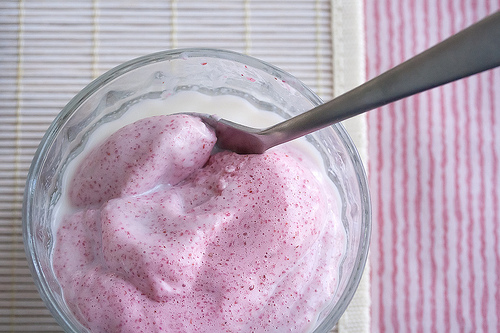
Learn more with:
www.latvia.eu ~
www.latvia.travel
Events in Latvia
While it's obvious on arrival that Riga is a city with a lot going on, some of the most exciting events in the city are its many varied festivals. We'll try to present a comprehensive list of festivals that occur annually in the city.
The festival is officially called the International Festival of Music Traditions “Riga Music” and celebrates traditional music, both Latvian and foreign.
When: January
Official festival website: Rigamusic.lv
This music festival celebrates the German composer and organist's works in an event lasting over a month and involving numerous concerts by esteemed musicians.
When: February-March
March is the month for drama, and this festival celebrates some of the rising stars in contemporary drama.
When: March
Official festival website: Drama.lv
This annual festival takes place in the Latvian National Opera and features the best in international and Latvian opera.
When: June
Official festival website: Drama.lv
A celebration of traditional and folk music.
When: June-July
Get ready to Salsa! Classes and performances will take place with some experts from around the world.
When: August-September
Official festival website: Rigasaslsafestival.com
The Latvian Song and Dance Festival festival is the mother of them all when it comes to huge events in Riga. The festival is over a century old, and is as much a celebration of Latvian pride as it is of music - though the music consists of huge choirs and dance groups singing and dancing their hearts out, as well as a large number of art exhibitions, parades and also some contemporary rock and pop concerts taking place.
When: Summer every five years (next festival: July 2008)
Official festival website: Dziesmusvetki2008.lv
September is the month for the largest film festival in Riga, the International Film Festival "Arsenals." The festival in its current incarnation includes the Forum International Competition Screening, the Baltic Film Competition (films from Latvia, Lithuania and Estonia), the Retrospective Screenings, the World cinema Panorama, and special thematic programs.
When: September
Official festival website: Arsenals.lv
The International Festival "Autumn Chamber Music Days" features a month of chamber music performances in some of the most beautiful halls in the city.
When: September-October
Official festival website: Latvijaskoncerti.lv
The International World Music Festival "Porta" celebrates music from around the world with a month of special performances.
When: November
Official festival website: Festivalporta.lv
